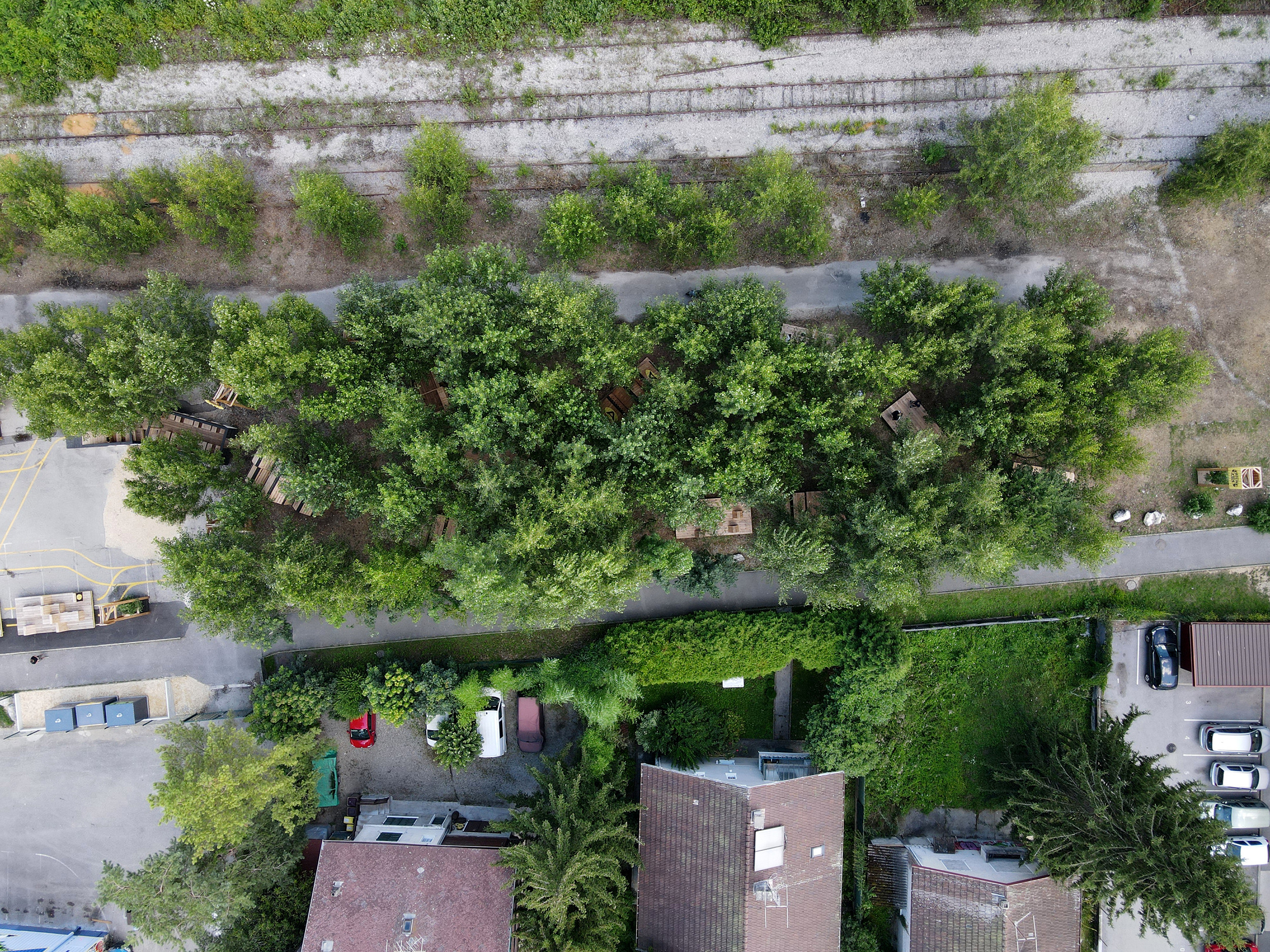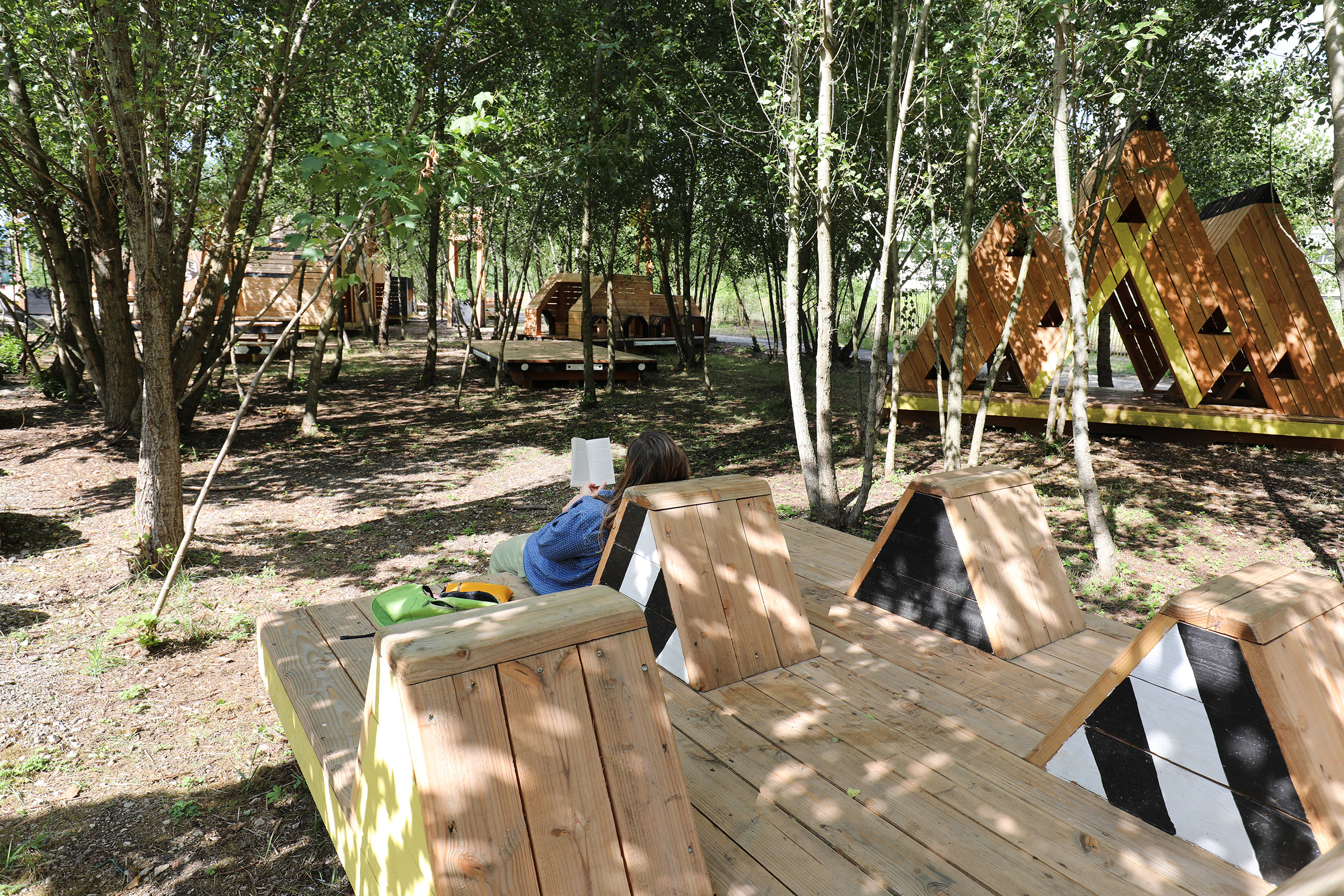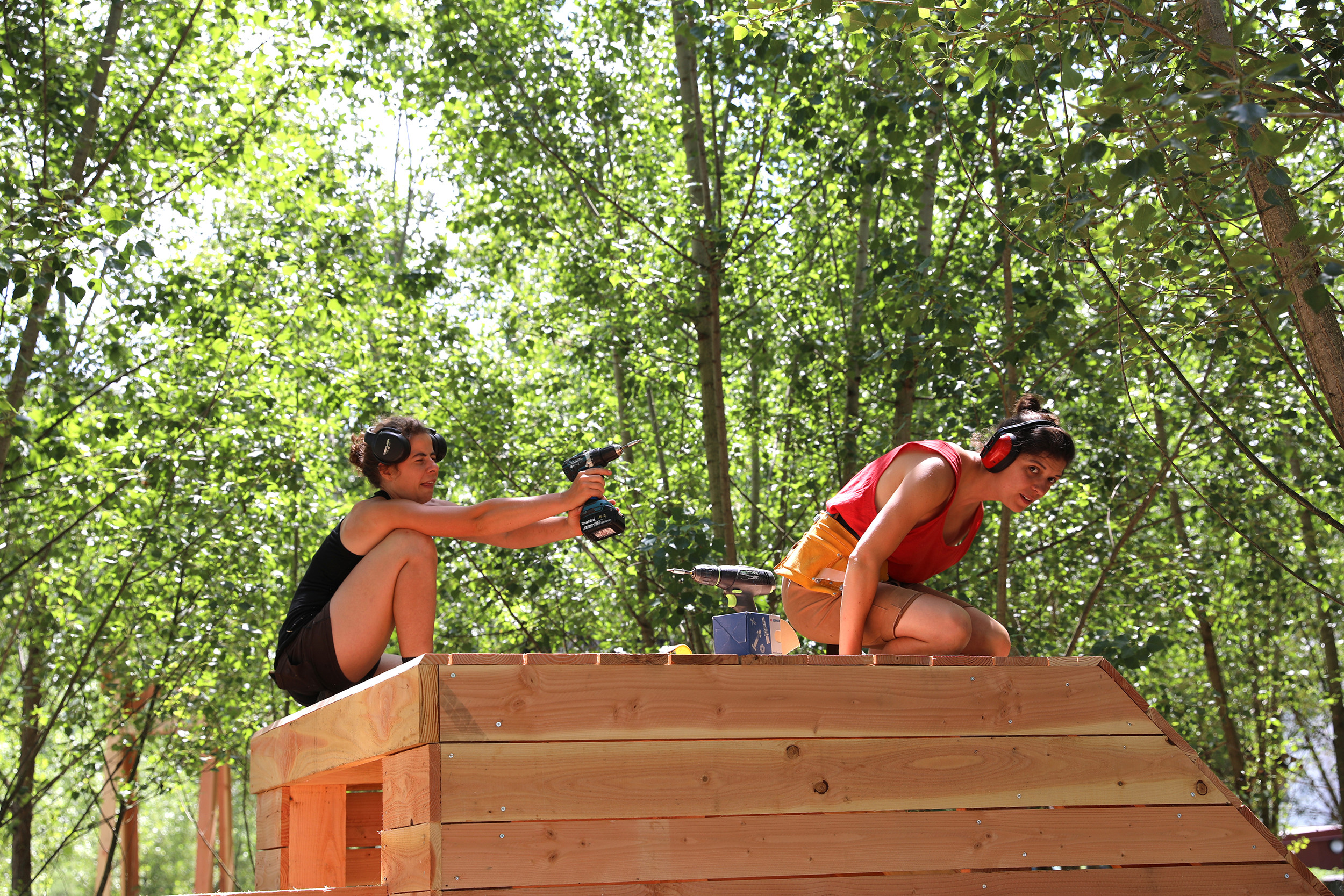
2021
La Friche des rails
Three Fountains Ephemeral Park
Three Fountains District
Annecy

La Friche des rails, a playful and poetic scenographic work installed on the abandoned railway track in the Trois Fontaines district of Annecy.
Work produced for the festival Annecy Paysage 2021
To create this installation, the collective Bruit du frigo was inspired by the strong identity of the site. A collection of unusual wagons is deployed along an imaginary railway line through the wild vegetation of the site. These wooden platforms offer multiple uses: picnics, games, deckchairs, terraces, stages… They allow people to meet up with children, family and friends, and to enjoy festive and cultural events.
Graphic interventions, coordinated by the Annécian collectiveArt by friends, add dynamism to the whole installation: the wagons and pylons offer as many supports to the imagination of the Swiss artist Rylsee and the blind wall of the neighbouring hangar hosts a monumental fresco by the German artist collective Low Bros. The artist Sophie Weidler-Bauchez intervenes on the ground with the creation of an imposing map of the district.
This project is supported by the elected representatives of the new Commune of Annecy as part of a public investment programme initiating the urban renewal of this district. On the basis of this installation and its uses, the City of Annecy is initiating a process of consultation with the population and citizen participation which will accompany the urban redevelopment project for the next three years.
The association of the “know-how” of Annecy paysages and the urban renewal projects of the City of Annecy is a first and opens up new forms of involvement of the population in the transformation of the city. It places art and cultural sensitivity at the centre of this process.
Last
projects
> all projectsAt the crossroads of art, territories and populations, our approach aims to promote the transition to sustainable, shared and welcoming cities, by proposing alternative ways of imagining and building our living environment and by exploring new forms of public space.


The Secret Balconies # 3 – The Pinède balcony
Montpellier

Common lands trail
Exhibition Nouvelles Saisons, arc en rêve centre d'architecture Bordeaux

The Secret Balconies # 2 – Balcony des Hauts de Massane
Montpellier

The Secret Balconies # 1 – Balcony Larzac
Montpellier

The Portable Public Spaces
Lyon

Modular shade canopy
Lyon













































